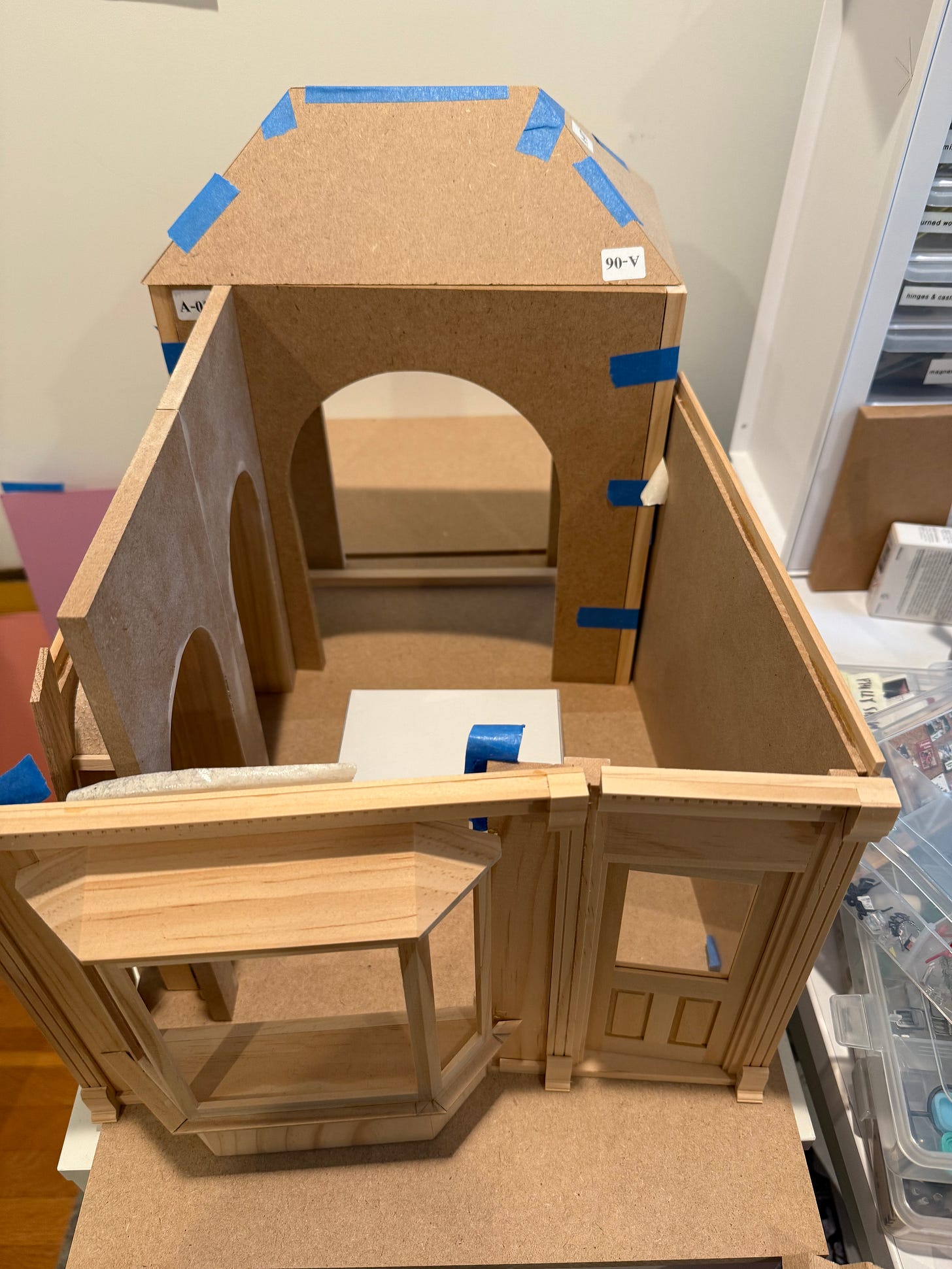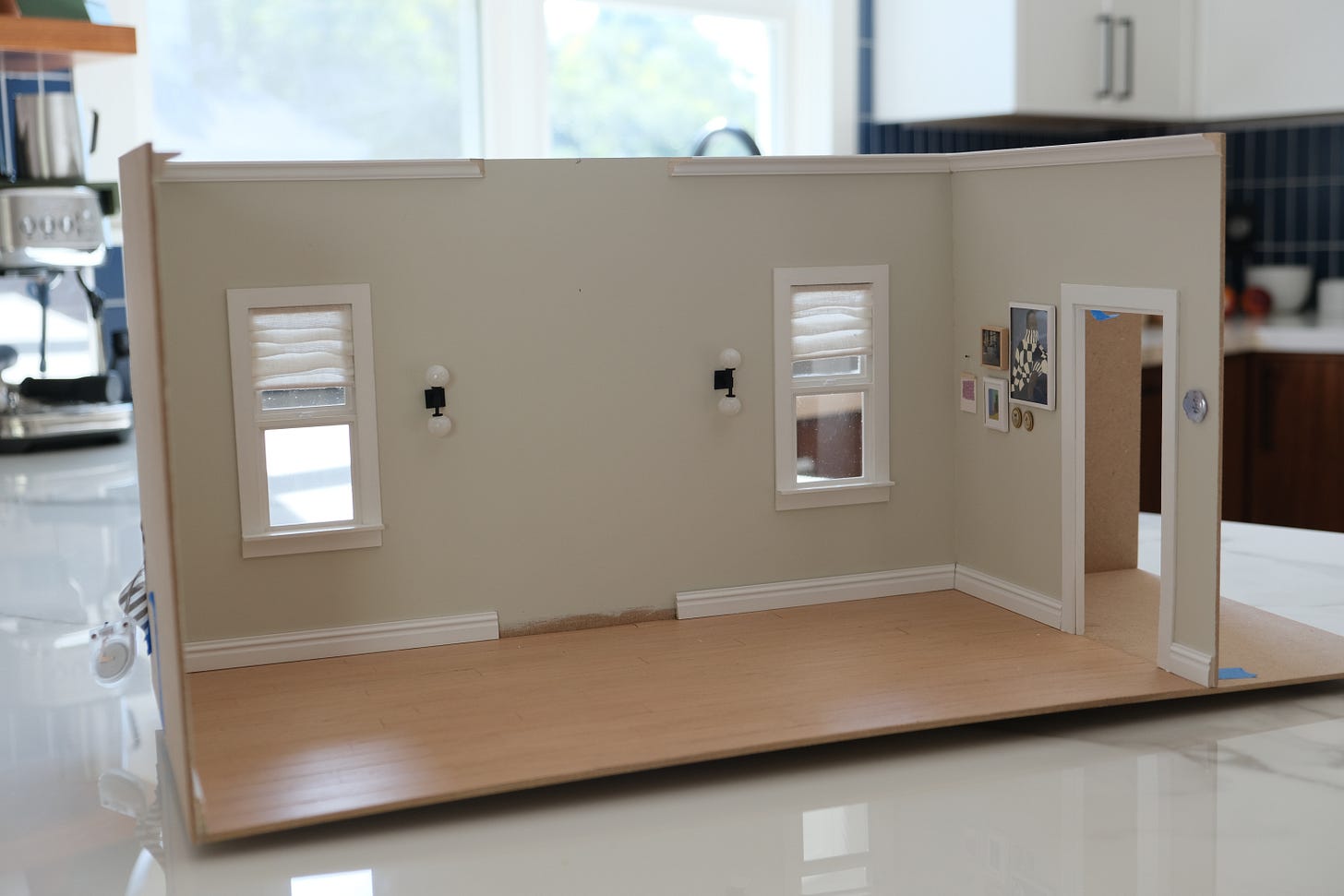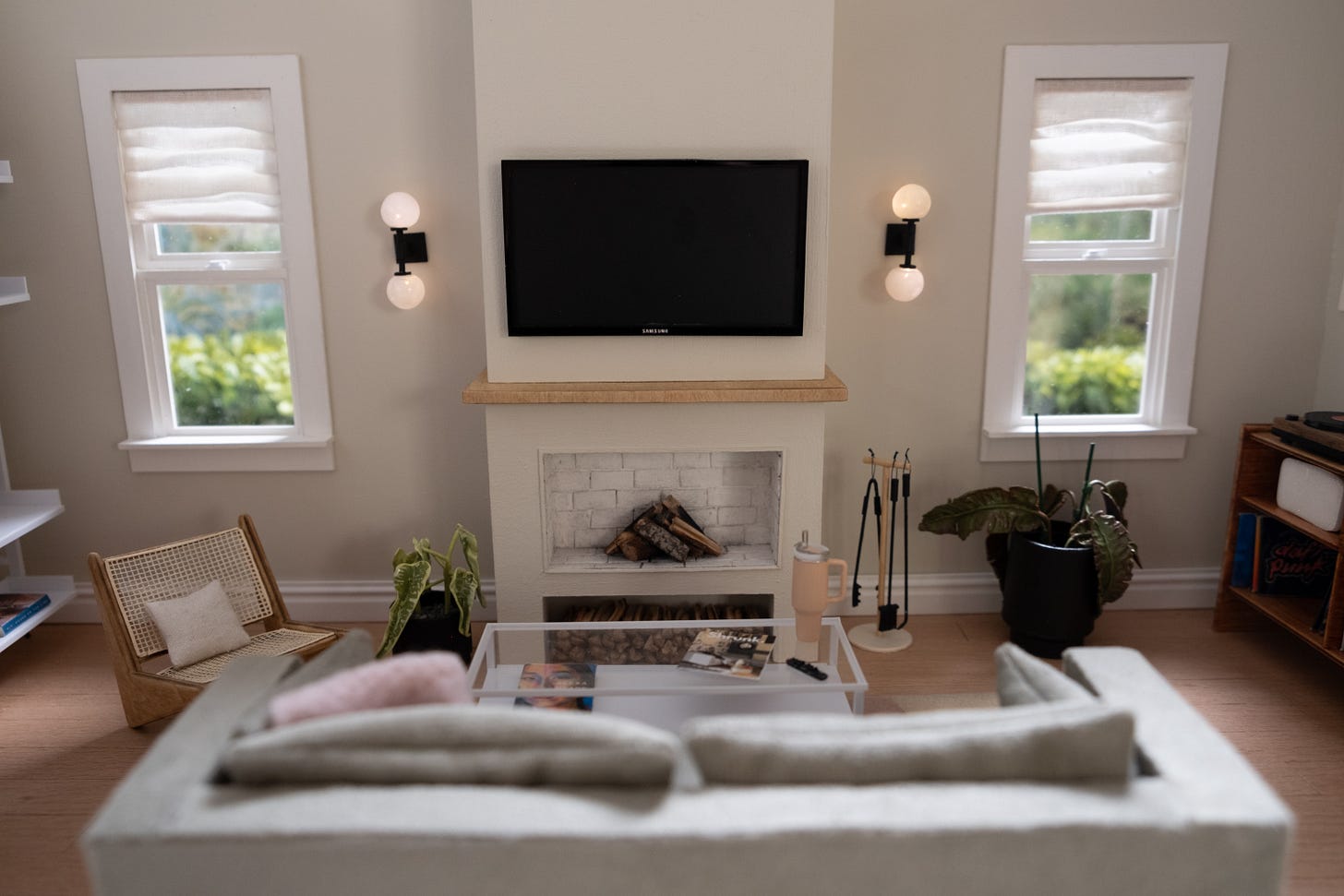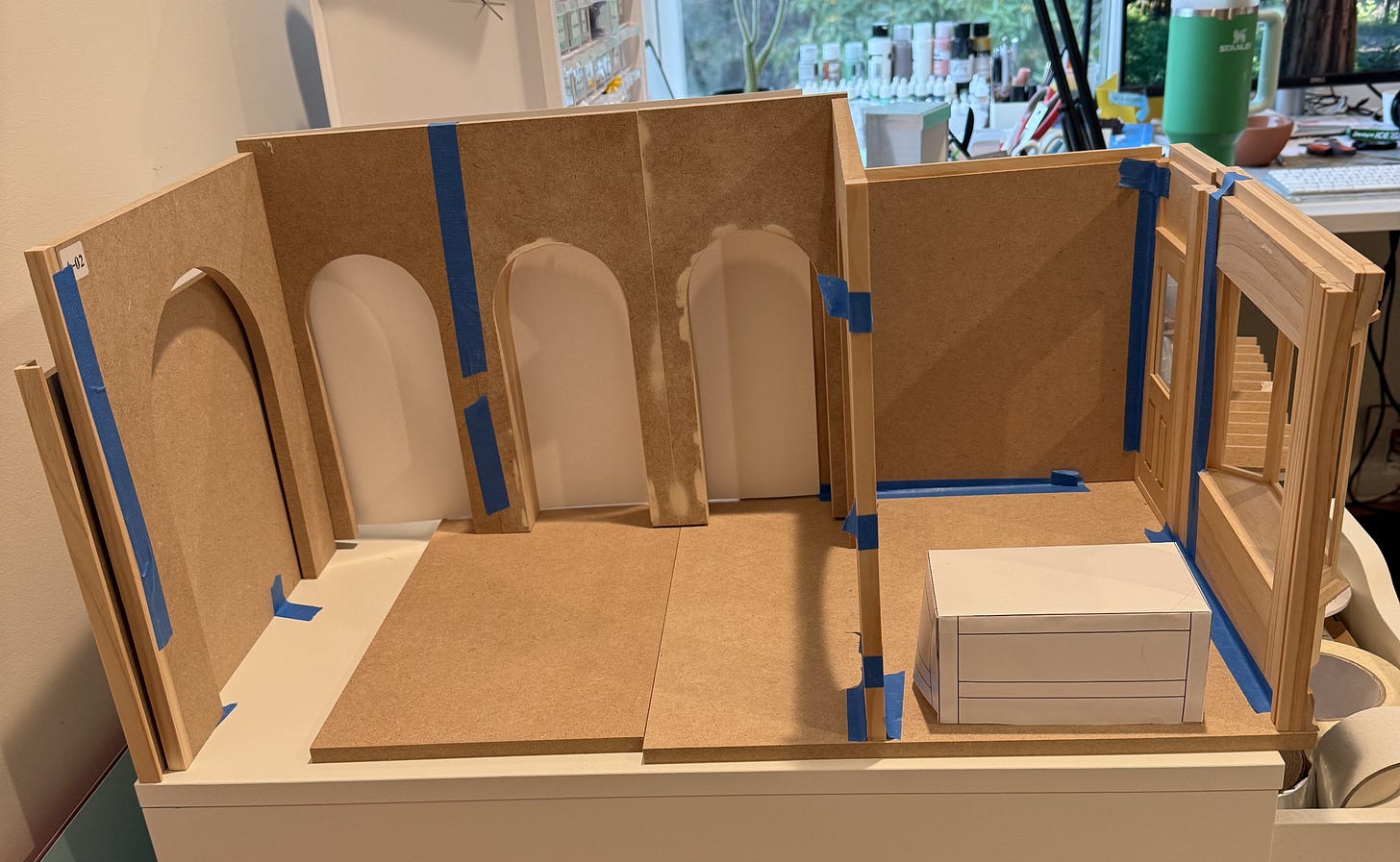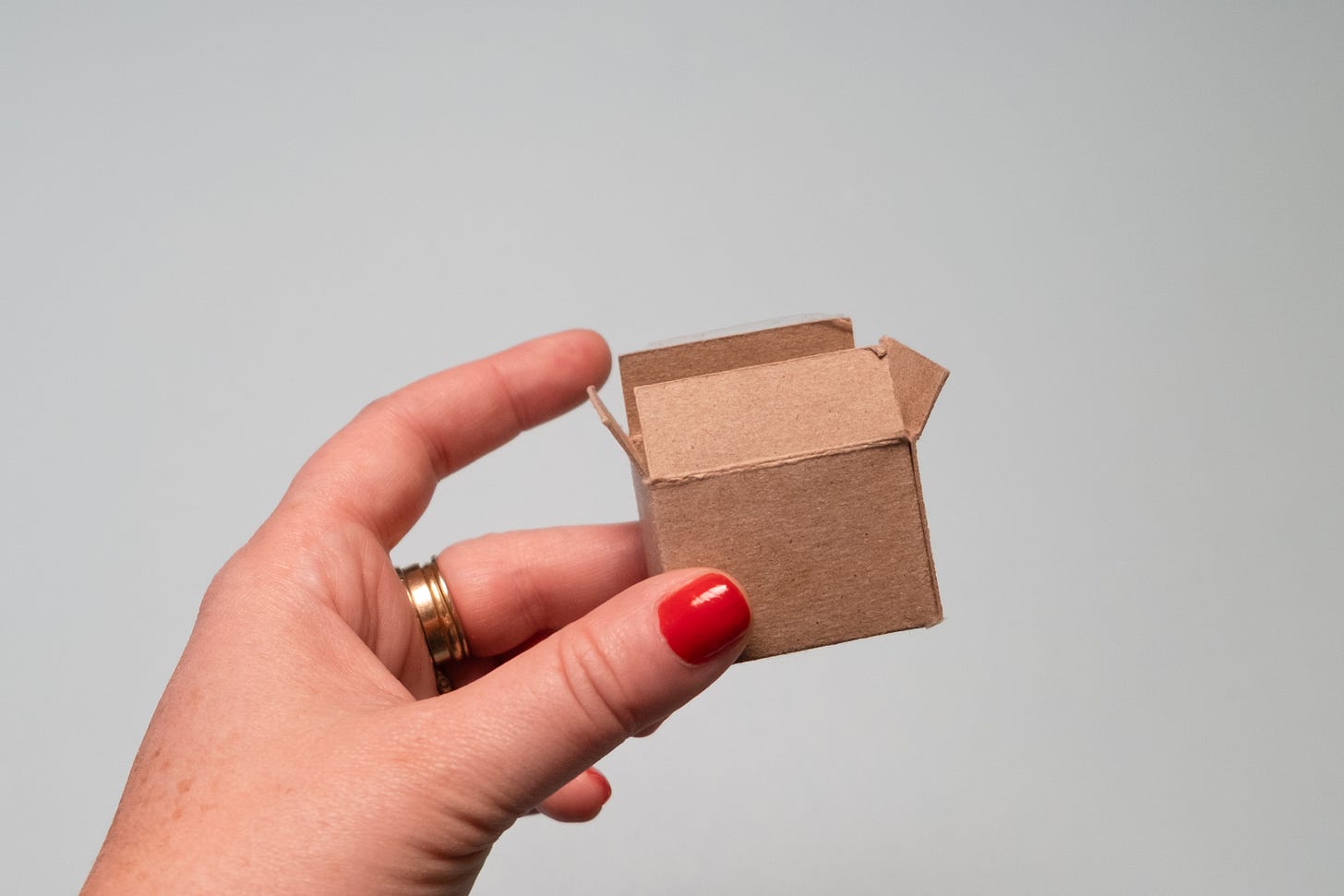Outside the box
Breaking fake rules
My main miniature project I’ve been working on this year is a miniature store. I started it in January, but had been dragging my feet on creating the main structure until I recently had a breakthrough.
For the walls and architectural components of this build, I’m “kitbashing”—a popular way for miniaturists and model-makers to create semi-custom builds by taking parts from one or more existing kits and modifying them to suit their needs. Basically, it’s a way to build something other than what you see “on the box.”
In my case I’m combining two kits to create my miniature store:
The Archy Arcade kit from the 2025 Creatin’ Contest from miniatures.com (RIP). The long-running contest challenged miniaturists to create something unique from the same, pre-selected kit. Sadly, the company changed ownership this year, and the new owners aren’t hosting the contest anymore. But that announcement came after I’d already purchased the kit, so I decided to finish the “contest” anyway, alongside a few other folks I chat with on dollhouse Instagram.
A storefront kit with a bay window and San Francisco-esque Victorian styling. It does the heavy lifting of creating a store’s front facade, so it’s the perfect start for the entryway of my miniature store.
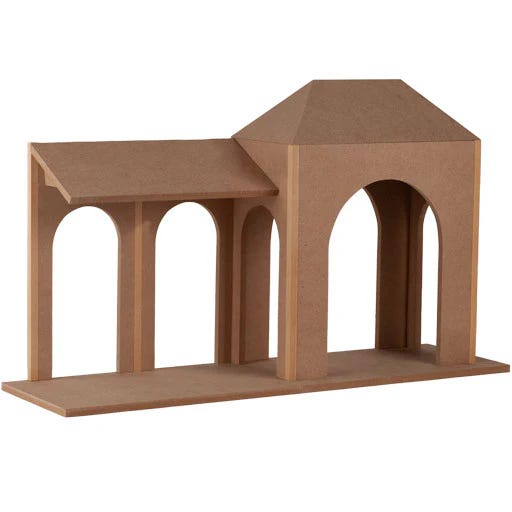

I have the components. But how to bash them together has evaded me.
Feeling stuck
When I first imagined the layout, I pictured the series of arches from the Arcade kit forming built-in shelves, capped with the storefront facade to create a box.

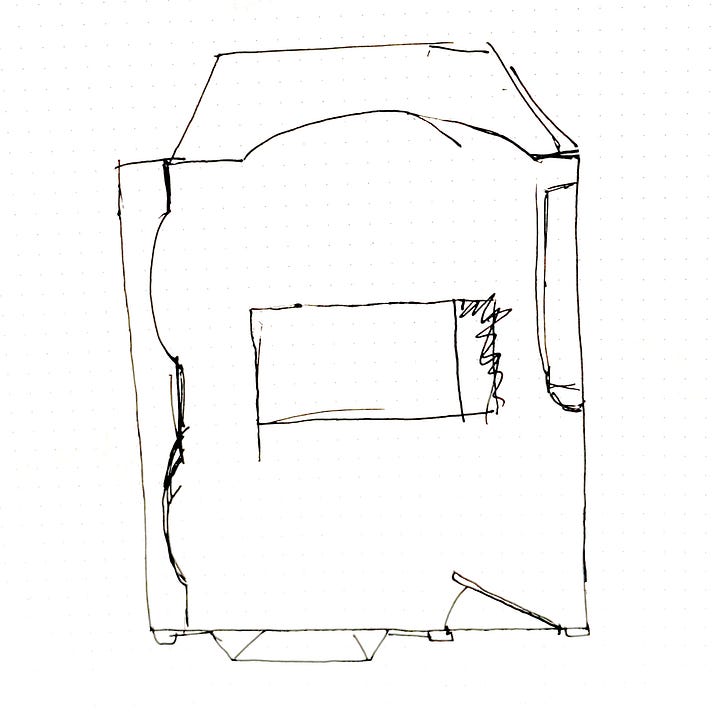
But I struggled to imagine how the walls and pieces would actually fit together. Instead of resolving the floorplan, I procrastinated (procraftinated?) by building tiny store contents. And the Frankensteined kits sat on top of my filing cabinet for months, held together with blue painters tape, gathering dust.
I tried a few different configurations of the space, and followed my usual space-planning process to no avail. But last Friday, with the pressure of the looming, not-actually-a-contest deadline coming up, I forced myself to sit in front of the sagging walls and figure it out.
And then I realized: I had literally boxed myself in.
You see, most miniature scenes I’ve created—and most dollhouses, for that matter—are missing a wall. That open side gives the viewer a unique vantage point, where they can see a space fully. It also allows for unencumbered photography, which is critical for my creative practice, since the final milestone of my projects is capturing pictures that bend reality.
Yet with this project, I kept assuming the store had to be a four-walled box. Who knows why.
After some head-scratching, I finally asked myself: what if the space is three-sided instead? Which broke me out of my literal, self-imposed box.
Ideas began to flow. I started sketching, pulled apart the months-old blue tape, and reassembled the pieces in a completely different way. Suddenly, I could see the project clearly again.
I did some digital drawing and drafting to plan out the architectural elements and furniture I needed to furnish my store. And then I printed and assembled them into a mini, mini paper maquette that helped me envision the space in three dimensions.

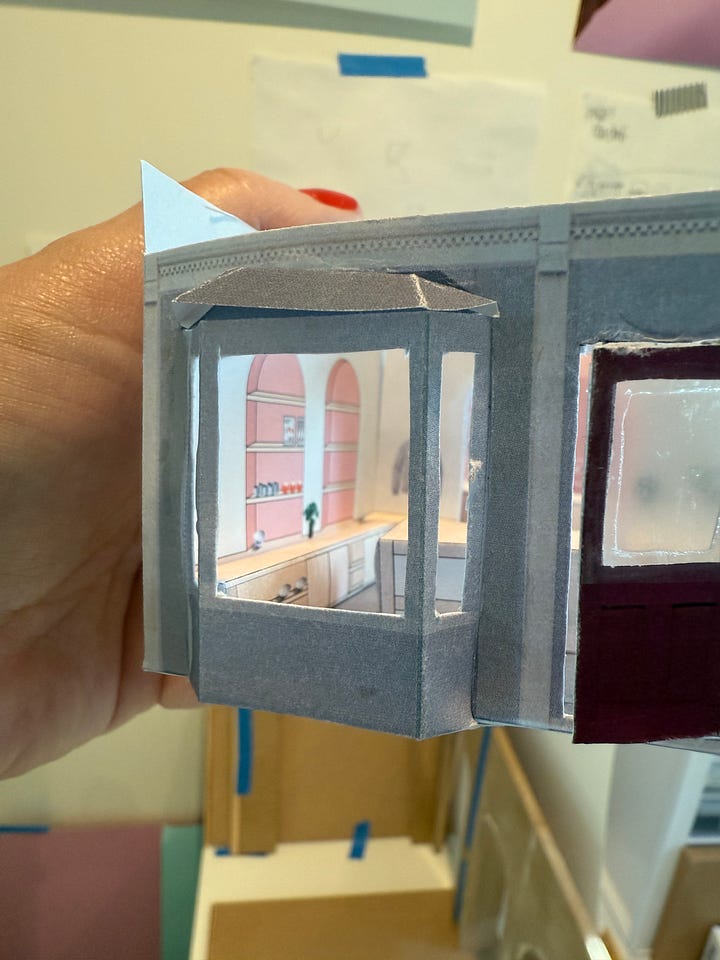
Like I said: I had a breakthrough.
Breaking down boxes
After getting over the excitement of getting unstuck, and acknowledging the cheesiness of being literally “boxed in,” it made me wonder: where else have I figuratively boxed myself in recently?
It’s easy to tunnel into a plan or otherwise hold a fixed mindset, even temporarily. We invent invisible constraints for a project, challenge, or situation.
Sometimes, these constraints help us move forward (like adhering to the deadline for a contest that no longer exists 🤣). But other times, we self-impose fake rules that we become scared to break.
The funny part is: I know this trap exists! And I’m fixed in my commitment to a growth mindset. I borderline-annoyingly challenge my and others’ assumptions all the time. And yet, despite this hyperawareness, it still sneaks up on me.
But all it takes is one shifted piece of MDF or one challenged assumption for me realize: I’m boxing myself in. I’m stalled…because of me.
So after I jumpstarted my stalled miniature layout, I spent a few moments running through the other items on my to-do list and the things that had been marinating in my mind—non-mini related. I identified a few things I had been putting off, and after a gentle poke, realized that I had created a few blockers or excuses that didn’t need to be there. I broke my fake rules, fired off a few emails and Slack messages, and returned to my day with a productive pep in my step.
It was one of the many ways my creative practice spills into the rest of my life.

Off the mat
At the craft table, I continuously learn lessons and practice actions like staying curious, evolving, “kitbashing” objects and ideas, moving forward, and questioning fake and real rules. These learnings help me when I’m making miniatures, but also across all facets of my professional and personal life.
I often write about the health benefits of focused handwork, and the joy of making. It’s scientifically proven. But there are also many positive downstream effects of having a creative practice. And one of my favorite examples is what I experienced this week: being reminded of new possibilities and ways of thinking.
It’s one of the many reasons why I can’t wait to see the impact Practice has, on and off the craft mat.


